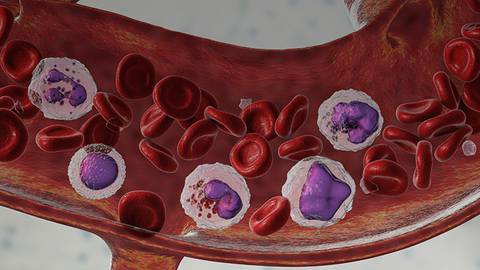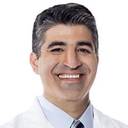Announcer:
Welcome to CME on ReachMD. This episode is part of our MinuteCME curriculum.
Prior to beginning the activity, please be sure to review the faculty and commercial support disclosure statements as well as the learning objectives.
Dr. Herrera:
This is CME on ReachMD, and I’m Dr. Alex Herrera from City of Hope. Here with me today is Dr. Alison Moskowitz from the Memorial Sloan Kettering Cancer Center.
We’ll start off with a question. Dr. Moskowitz, how do you individualize frontline therapy approaches for patients with classic Hodgkin lymphoma?
Dr. Moskowitz:
Thank you for that question, Dr. Herrera. Well, as we discussed in the last episodes, the standard approach now for a patient with stage 3 or stage 4 Hodgkin lymphoma is to treat with brentuximab plus AVD [doxorubicin + vinblastine + dacarbazine] based upon the ECHELON-1 data. Now, there are some nuances on how we personalize therapy for our patients. Many of our patients are quite young, and for both men and women, I think it’s really important to discuss fertility preservation before starting therapy for Hodgkin lymphoma. Now we talked about that the risk of infertility with BV [brentuximab vedotin]-AVD does not appear to be any different than we see with ABVD [doxorubicin + bleomycin + vinblastine + dacarbazine]. However, there is potentially a small risk, and really what I’m more worried about is the potential that the rare incidents where a patient may end up having relapse or refractory disease following their frontline treatment and end up needing second-line therapy. And in that situation, sometimes we just don’t have the best opportunity to have someone undergo fertility preservation, and it’s the second-line treatments and beyond which are the treatments that have a higher risk of causing infertility. So I do tend to counsel my patients and try to encourage them to undergo fertility preservation prior to the initiation of any treatment as long as they can.
The other thing that tends to come up over and over again for patients who are receiving brentuximab plus AVD is peripheral neuropathy. So we saw in the ECHELON-1 data that about two-thirds of patients will develop peripheral neuropathy with brentuximab plus AVD, and so it’s really important to monitor patients closely and have a low threshold to modify the doses of the treatment for patients particularly who develop grade 2 peripheral neuropathy. Now my approach, which is really based upon what was done in the ECHELON-1 study is to dose reduce the brentuximab for patients who developed grade 2 neuropathy. And, in fact, for patients who have persistent neuropathy or worsening despite a dose reduction, sometimes I will discontinue the brentuximab altogether.
Dr. Herrera:
Patients, who are going to start their frontline therapy for Hodgkin lymphoma – in this case, advanced-stage Hodgkin lymphoma – I definitely discuss fertility preservation even though the data about pregnancies and partner pregnancies after brentuximab vedotin-AVD from the ECHELON-1 study was reassuring, that there wasn’t a negative impact on fertility.
In terms of dose reductions for peripheral neuropathy, I absolutely agree that patients should have dose modification when they develop grade 2 peripheral neuropathy, and I agree that, you know, on the original trial, we really focused on the dose reduction of the brentuximab vedotin.
You know, one possible other approach is to think about reducing the dose of vinblastine. As you know, there was a pediatric trial recently from the Children’s Oncology Group where brentuximab vedotin was incorporated into their chemotherapy backbone, ABVE-PC [doxorubicin, bleomycin, vincristine, etoposide, prednisone, cyclophosphamide], and on that study, they actually reduced the vincristine in that regimen, and prior to dose reducing the brentuximab vedotin, to maintain the brentuximab dose intensity. So that’s also an approach.
I’d say the other thing that to note is that I’m pretty individualized with managing patients’ neutropenia. So I try to, you know, growth factor is necessary, and I’ll prefer to give individual shots of Neupogen [filgrastim] as opposed to Neulasta [pegfilgrastim] and I really will modify the number of individual doses depending on the white blood cell count, really each dose of therapy.
So again, just to summarize, there’s many ways that you have to think about individualizing therapy for patients with advanced-stage Hodgkin lymphoma who are receiving brentuximab-AVD.
And this has been a brief but really outstanding discussion. Unfortunately, our time is up, but thanks for listening today.
Announcer:
You have been listening to CME on ReachMD. This activity is provided by Prova Education and is part of our MinuteCME curriculum.
To receive your free CME credit, or to download this activity, go to ReachMD.com/Prova. Thank you for listening.


 In support of improving patient care, Global Learning Collaborative (GLC) is jointly accredited by the Accreditation Council for Continuing Medical Education (ACCME), the Accreditation Council for Pharmacy Education (ACPE), and the American Nurses Credentialing Center (ANCC) to provide continuing education for the healthcare team.
In support of improving patient care, Global Learning Collaborative (GLC) is jointly accredited by the Accreditation Council for Continuing Medical Education (ACCME), the Accreditation Council for Pharmacy Education (ACPE), and the American Nurses Credentialing Center (ANCC) to provide continuing education for the healthcare team.






Facebook Comments